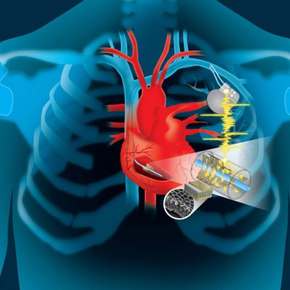Implants Powered by a Beating Heart
New Device Captures the Heart's Energy
Implants Powered By Electricity from Heart Beats
This is fascinating and very promising research from Dartmouth College engineers funded by the National Institute of Health (NIH), The Dartmouth team have created a dime sized device that harvests the kinetic energy of a beating heart to generate electricity and power a biomedical device indefinitely. It's an implant, a heart pacemaker, powered by a beating heart.
Dime-Sized Device
What is so interesting is this is a dime sized device. It relies on a thin film - piezoelectric film - attached to a pacemaker's lead. It converts heart beats' kinetic energy into electricity to power the pacemaker implant.
NIH Funded Research with Other Implant Device Applications
This is essentially an organ energy harvesting device that could work beyond the heart and for other organs such as kidneys. The Dartmouth team's three years of research results have been published in Advanced Materials Tech. They have two more years of NIH funding to complete testing and regulatory approval. A commercial product is expected in five years. It's a case of recapturing the heart's motion to give a new lease on life.
 |
| Source: Dartmouth College |
Implants Powered By Electricity from Heart Beats
This is fascinating and very promising research from Dartmouth College engineers funded by the National Institute of Health (NIH), The Dartmouth team have created a dime sized device that harvests the kinetic energy of a beating heart to generate electricity and power a biomedical device indefinitely. It's an implant, a heart pacemaker, powered by a beating heart.
Dime-Sized Device
What is so interesting is this is a dime sized device. It relies on a thin film - piezoelectric film - attached to a pacemaker's lead. It converts heart beats' kinetic energy into electricity to power the pacemaker implant.
NIH Funded Research with Other Implant Device Applications
This is essentially an organ energy harvesting device that could work beyond the heart and for other organs such as kidneys. The Dartmouth team's three years of research results have been published in Advanced Materials Tech. They have two more years of NIH funding to complete testing and regulatory approval. A commercial product is expected in five years. It's a case of recapturing the heart's motion to give a new lease on life.
%20(1)%20(1)%20(3)%20(2)%20(2).jpg)


Comments
Post a Comment